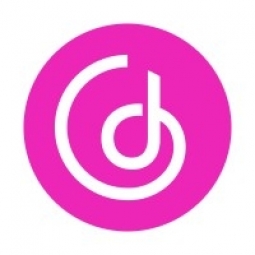Customer Company Size
Large Corporate
Region
- America
Country
- United States
Product
- GoodData
- Data Insights
- BLOX CMS system
Tech Stack
- Data Analytics
- Google Analytics
- Google Ad Manager
Implementation Scale
- Enterprise-wide Deployment
Impact Metrics
- Revenue Growth
- Productivity Improvements
- Digital Expertise
Technology Category
- Analytics & Modeling - Big Data Analytics
- Analytics & Modeling - Real Time Analytics
Applicable Functions
- Sales & Marketing
- Business Operation
Use Cases
- Real-Time Location System (RTLS)
- Supply Chain Visibility
Services
- Data Science Services
- System Integration
About The Customer
TownNews, founded in 1989, is a leading provider of content management systems and platforms for media organizations in the U.S. It serves 800 print publications nationwide, digital and TV outlets, too, and 2,000 websites. Its integrated digital publishing and content management solutions power some of the most distinguished media organizations in the local media industry. Most of its customers are mid-sized to smaller community-based outlets in a hyper-competitive industry. TownNews produces about a billion page views a month and 24 million rows of data daily.
The Challenge
TownNews, a leading provider of content management systems and platforms for U.S. media organizations, found that most of its customers, mid-sized to smaller community-based outlets, lacked deep insight into their content assets. They had long generated audience and editorial data from content management systems, traffic reports from Google Analytics, and advertising revenue reports. However, they lacked deep insight into their content assets, and knowing what content mattered most to their audience and advertisers. In most media organizations, data is siloed within departments. The advertising team can see how the ad stack is performing but doesn’t have access to editorial analytics, and vice-versa. No one can see the big picture.
The Solution
In early 2020, TownNews deployed GoodData technology to launch “Data Insights” to give its media customers robust new tools for gathering, understanding, and acting upon the multitude of data that impacts their businesses. Data Insights will make it easy to draw connections between the media company’s core business products-videos, articles, and other content-and the revenue that’s generated from those products. By understanding how each piece of content influences revenue, media organizations can make more informed decisions regarding content, advertising rates, and even staffing. With Data Insights, media companies will be able to assess such things as whether a viewer is a paying subscriber or a drive-by viewer-and what content plays better with each audience. They’ll know how much revenue is generated by each article, or even each reporter. They’ll know where traffic comes from to the site, whether via a social media outlet or via organic search.
Operational Impact
Quantitative Benefit

Case Study missing?
Start adding your own!
Register with your work email and create a new case study profile for your business.
Related Case Studies.

Case Study
Remote Temperature Monitoring of Perishable Goods Saves Money
RMONI was facing temperature monitoring challenges in a cold chain business. A cold chain must be established and maintained to ensure goods have been properly refrigerated during every step of the process, making temperature monitoring a critical business function. Manual registration practice can be very costly, labor intensive and prone to mistakes.

Case Study
Leading Tools Manufacturer Transforms Operations with IoT
Stanley Black & Decker required transparency of real-time overall equipment effectiveness and line productivity to reduce production line change over time.The goal was to to improve production to schedule, reduce actual labor costs and understanding the effects of shift changes and resource shifts from line to line.

Case Study
Jaguar Land Rover Speeds Order-to-Cash Cycle
At Jaguar Land Rover, vehicles physically move around the facility for testing, configuration setting, rework and rectification, leading to a longer search time to get each vehicle to its next process facility. The main goal is to minimize the vehicles' dwell time between end of line and the delivery chain which was previously a manually intensive process. Jaguar Land Rover's goal was to build on the success of an earlier RFID project and improve the efficiency of delivering vehicles to meet dealer orders.

Case Study
Retail Uses RFID to Enable Cold Chain Monitoring
Like most grocery retailers, Hy-Vee is faced with the challenge of providing the highest quality products to its shoppers. Shoppers want the longest possible shelf life from perishable products and expect a consistent product experience each time they shop. Controlling the quality of products sold leads to shopper loyalty, which is of paramount importance to the success of Hy-Vee. Before products arrive in stores, Hy-Vee's distribution centers (DCs) handle items including dairy products, fresh meats, seafood, deli items, produce and frozen goods, all of which have different temperature needs and sensitivities. During transit from suppliers to DCs, Hy-Vee has limited visibility and temperature management abilities due to large amount of supplier managed transportation. For instance, during a week-long transit, a supplier's carrier equipment may malfunction, causing an item to thaw and then refreeze once repairs are made. Hy-Vee sought help from TempTRIP, an RFID solution provider that focuses on shipping, storage, receiving, and temperature control. TempTRIP's EPC RFID tags use Impinj chips to monitor and report temperature readings throughout the shipping and receiving process. The tags can also be re-configured and re-used, a unique feature within the current market of temperature monitoring devices.









